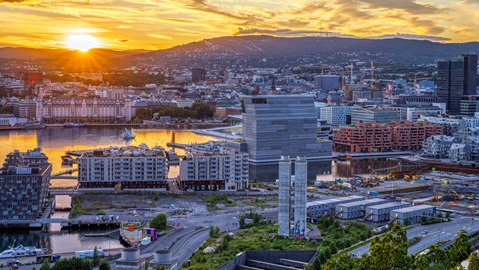The double edge of urban Nature-Based Solutions: local gains, global costs
The implementation of certain Nature-Based Solutions (NBS) in urban areas brings local benefits but may also increase global environmental pressures due to the resources used for their creation and the emissions generated throughout their lifecycle.

This is what a study conducted by researchers at ICTA-UAB reveals, which evaluates the impacts that NBS in urban environments can have on both local and global vulnerabilities. The framework, tested with different scenarios of green roofs expansion in Oslo (Norway), highlighted the cross-spatial impacts that these infrastructures can create.
In the article, led by ICTA-UAB researcher David Camacho-Caballero and published in Sustainable Cities and Society, a novel framework is proposed for assessing the (desired and undesired) impacts of urban NBS within and beyond city limits. The study offers a way to integrate these impacts by linking them to socio-ecological vulnerabilities at the local scale (heat, flooding, and air quality) to the global scale (such as climate change and nutrient cycles).
The framework was tested on four green roof implementation scenarios, from current levels to city-wide maximization, by mapping their effects on five local vulnerabilities: heat, runoff, air pollution, pollinator habitat loss, and lack of nature interaction; and four broad-scale vulnerabilities: climate change, eutrophication, toxicity, and ozone depletion.
The results reveal that while green roofs reduce local vulnerabilities, they also increase global environmental pressures, mainly due to material inputs and lifecycle emissions. The team worked with stakeholders in Oslo to determine which trade-offs are acceptable, using a multi-criteria analysis (MCA) approach.
The outcome is a “most favorable scenario”: implementing green roofs on 68% of suitable rooftops, targeting the most vulnerable areas, while keeping global impacts within safe thresholds. This research offers a scalable decision-support tool for planners aiming to align urban greening with climate resilience and Earth system limits.
Reference:
Camacho-Caballero, D., Langemeyer, J., Segura-Barrero, R., Vervoort, G., Barton, D. N., & Villalba, G. (2025). Bridging local and global vulnerabilities for an integrated assessment of nature-based solutions. Sustainable Cities and Society, 130, 106508. https://doi.org/10.1016/j.scs.2025.106508